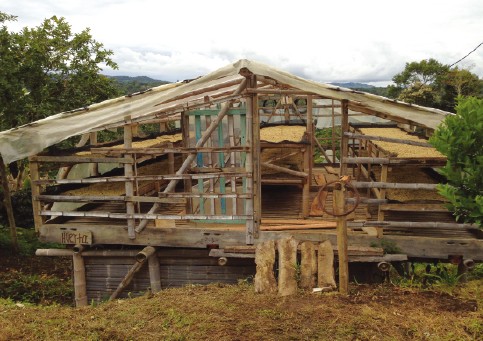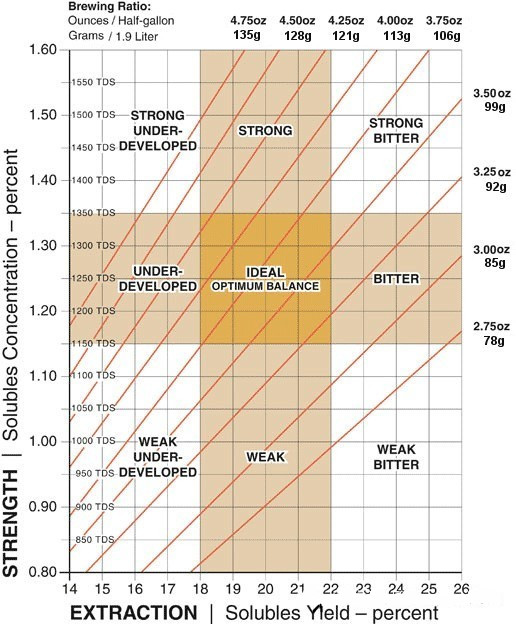The History of making and using Ice drop Coffee introduction of single boutique Coffee
The most popular way to make coffee this summer is ice drop coffee, which has a history of a century but has been forgotten by people. This kind of coffee is easy to make and you can try it at home. But why does this unpopular way of making coffee attract the attention of coffee lovers and baristas?

The trend in the coffee industry in 2014 was that Flat White coffee became popular first, and then the Drip-filter drip coffee maker became popular. When people are still immersed in the wonderful feeling brought by these two kinds of coffee, Philharmonic pressure is born again. Now, professional baristas from the UK have returned to the age-old method of making ice drop coffee, making it a new favorite in the coffee industry this summer.
Iced coffee is different from iced coffee. Iced coffee is usually made from espresso and ice, sometimes with milk and syrup. However, ice drop coffee, as the name implies, is to brew coffee without heating. It takes only warm water to make ice drop coffee, but it takes a long time to make, usually 24 hours. Due to the full extraction, the coffee made from the ice drop kettle is extremely concentrated, so the coffee should be diluted with 1:1 water and cooled to make it taste better.
The quiet rise of ice drop coffee is beyond everyone's expectation. Today, special cafes from London to Edinburgh serve iced coffee to customers. Why on earth is this? The answer is simple, because ice drop coffee tastes sweeter and has very low acidity, so it is very suitable for drinking in summer and can bring people a new coffee experience while refreshing.
Wayne, who runs the Manchester-based North Tea Power Cafe, now sells 200 bottles of iced coffee a week for £3.50 a bottle. He said he doesn't know why iced coffee is so popular with consumers this summer. Wayne has been serving iced coffee in the store for the past four years, but very few customers have come to buy it. But this year, the number of customers drinking iced coffee has soared. He believes that this represents a growing British interest in coffee. "when a person understands a new way of making coffee, he will tell the second person. Over time, more and more people will be interested in it. I remember buying several V60 hand coffee pots in the store. At that time, not many people would pay attention to them, but now more and more people like to drink hand coffee. It's the same with iced coffee. In the past, we always had ice-drop coffee pots in our store, and few people would offer to give it a try. But this year, there has been an endless stream of people coming to drink iced coffee. " Wayne explained.
For coffee enthusiasts and professional baristas, the greatest advantage of ice drop coffee is that it can reflect the tiniest differences between coffee tastes. I once tried an ice drop coffee made from Nicaraguan coffee beans at the North Tea Power Cafe. The coffee is in a 330ml bottle and looks like freshly brewed beer. The coffee has a strong chocolate aroma and a warm aftertaste. I personally think this kind of coffee is very suitable for making coffee cocktails. "because this method does not need to be heated, it will not bring out the bitter and sour taste of the coffee. The taste of the coffee is full and sweet." "I'm not saying that iced coffee is the best way to make coffee, but it does highlight the strong chocolate and nutty aromas of dry processed coffee beans originating in Africa," Wayne said. "
Ice drop coffee may be unheard of to the British, but the Japanese are no stranger to it. In Japan, ice drop coffee has a history of more than a hundred years. According to records, the Japanese invented iced coffee as early as the 16th century and called it Kyoto coffee (Kyoto Coffee). The ice drop coffee was then taken to Indonesia by Dutch merchant ships, and the Indonesians improved it to make large cups of take-away coffee. Finally, this year, ice drop coffee traveled across the ocean and finally got a new life in Britain, becoming the new favorite of the coffee industry.
Of course, not everyone likes iced coffee, and some people think that drinking cold coffee is meaningless. But it is because of this that ice drop coffee can continue to develop and innovate. Baristas at North Tea Power are preparing to mix iced coffee with almond or coconut milk and add a little nitrogen to make a beer-like drink. "it looks like Guiness beer. You can use it to make ice cream or popsicle. "
Are coffee lovers in Britain ready to try new coffee drinks? Let's wait and see. Having said so much, have you ever had iced coffee? If you have, are you in love with it? Do you think the rise of iced coffee means the decline of modern coffee-making technology?
Make your own iced coffee at home.
In Japan, people use cool professional curling kettles to make iced coffee, but you can actually replicate this seemingly complex process at home. First of all, you need coffee powder with a rough grinding degree of 120g-180g, and the coffee beans you choose are preferably individual coffee. Second, you need to fill a jar with 1 liter of water, pour all the coffee powder into it and soak fully. Cover the jar, seal it with duct tape, and leave it at room temperature or in the refrigerator for 16 hours. During this period, you need to shake the jar 2-3 times to prevent the coffee powder from sinking on the bottom of the jar. After production, filter the coffee with double or triple layers of filter paper (at North Tea Power Cafe, the barista will filter the coffee with a nylon filter and then with the filter paper) until the coffee is clear and free of impurities. Like regular drip coffee, iced coffee is very high in caffeine, so to avoid getting too excited, you'd better dilute the coffee with 1:1 water. Don't forget to cool the coffee to the right temperature before drinking it. Of course, you can add one or two pieces of ice to make it more refreshing.
Source: Beresta's blog
Important Notice :
前街咖啡 FrontStreet Coffee has moved to new addredd:
FrontStreet Coffee Address: 315,Donghua East Road,GuangZhou
Tel:020 38364473
- Prev

Measure the water activity of high-quality coffee raw beans what is fine coffee European boutique coffee association
For the coffee industry, it is a well-known fact that the quality of raw beans declines over time. The demand for high quality of boutique coffee makes the industry more sensitive to the issue of raw bean aging. One of the biggest challenges that importers need to face is how to maintain the original quality of the top raw beans purchased during transportation. The impact of long sea and land trips on raw beans may be bad luck.
- Next

Calculation method of SCAA Gold Cup extraction theoretical Coffee extraction rate calculation of correct extraction
You can refer to the above chart, which is a standard gold cup theory chart (also known as extraction control chart; Brewing Control Chart,SCAA). Do you feel dazzled? It doesn't matter. Let's talk about what this picture is going to say in a simpler way. Then let's go on to look at the picture above. We will send some unnecessary letters.
Related
- What is the meaning of lactic acid fermentation with coffee bean treatment?
- How to judge the state of foam by sound?
- How does the latte pull out the unicorn pattern? Come to get for a little trick to improve the flower pull!
- Will flower pulling affect the taste of the latte?
- Do you know the history of coffee?
- The difference between honey treatment and sun washing what is raisin honey treatment?
- What kind of milk can a novice use to make coffee foam to keep the foam longer? The correct method and skills of milking tutorial sharing
- Why do washed coffee beans taste sour? Flavor characteristics of washed Coffee
- Introduction to the skill of how to practice the size and height of water injection around the circle of hand-brewed coffee
- How do beginners practice coffee flower drawing from scratch?

